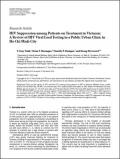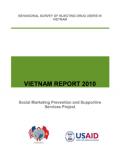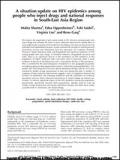Publications on People Who Inject Drugs (PWID)

Resource | Publications,
The goals of this study were to document ART efforts in a resource-limited setting with high prevalence of IDUs, to identify high-risk groups for failure who may benefit from more frequent monitoring or other interventions and to assess the potential for delayed diagnosis of treatment failure when using targeted testing based on clinical and immunologic criteria.

Resource | Publications,
In responding to the problem of drug use, many countries have introduced severe penalties for drug use and related crime, which have resulted in large numbers of people in prisons, compulsory treatment centres, or labour camps without significant long term impact on drug use, drug dependence or drug-related crime in the community and are in contradiction with human rights. At the same time, the long term incarceration of a large number of people who use drugs is expensive.

Resource | Publications,
Between December 2009 and February 2010, PSI Vietnam, in partnership with local research agency, Newcare conducted a behavior survey of male injecting drug users, across seven PEPFAR priority provinces in Vietnam (Ho Chi Minh City, Hanoi, Hai Phong, Quang Ninh, An Giang, Nghe An, and Can Tho).

Resource | Publications,
To achieve significant impact on the HIV epidemics among people who inject drugs, governments, specifically national AIDS programmes, urgently need to scale up needle–syringe programmes and opioid substitution therapy and make these widely available both in community and closed settings.

Resource | Tools,
This training manual has been written as a companion to the WHO Clinical Guidelines for Withdrawal Management & Treatment of Drug Dependence in Closed Settings. It contains comprehensive trainer's notes and participant handouts. A powerpoint slideshow is also provided as a teaching aid. The training described in this manual is suitable for all people who work in a health or welfare capacity in closed settings and whose work involves people who use drugs.










